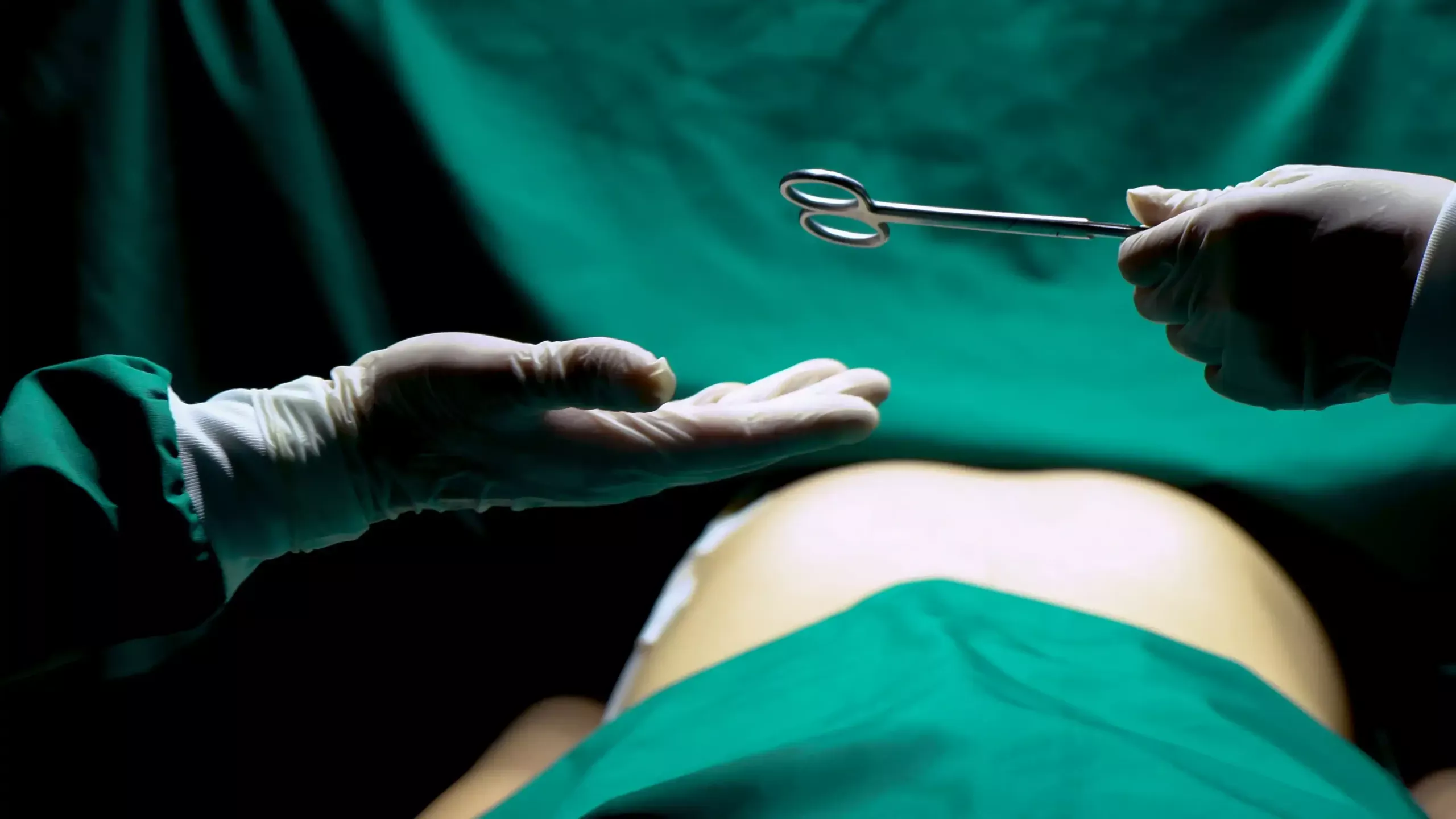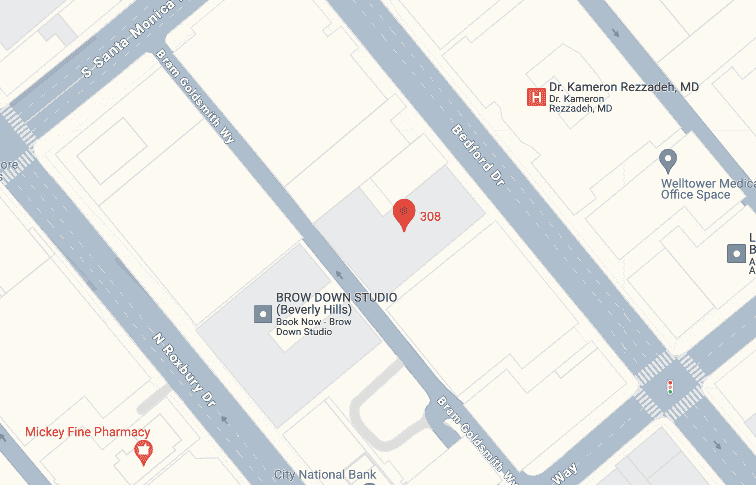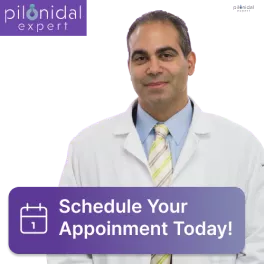Which doctor treats pilonidal cyst?
A pilonidal cyst frequently develops at the top of the buttocks crease, close to the tailbone. It may develop infected in some instances and cause discomfort, pain, swelling, and discomfort. It’s critical to comprehend the process involved in pilonidal cyst removal if you’re suffering with the condition. This article provides an overview of the steps and considerations related to the removal of a pilonidal cyst.
Evaluation and Diagnosis
It is imperative to seek medical advice from a qualified individual—typically a general surgeon—before moving forward with removal. A physical examination of the afflicted area is necessary for the diagnosis. To determine the size of the cyst, imaging techniques like ultrasound may occasionally be used. The surgeon will choose the best course of action based on the evaluation.
Treatment Options
Pilonidal cysts are often treated surgically, sometimes with total removal of the cyst as well. These are the standard practices:
1. Incision and Drainage:
A straightforward operation known as incision and drainage may be carried out if the cyst is not contaminated. In order to drain the cyst and relieve pain and discomfort, the surgeon will make a small cut. Local anesthetic is frequently used to perform this.
2. Surgical Excision:
In cases of recurrent cysts or severe infections, surgical excision might be recommended. Under general or local anesthetic, the whole cyst as well as any sinus tracts are removed during this treatment. After that, the area is stitched, and during the healing process, good wound care is crucial.
3. Laser Hair Removal:
Ingrown hairs frequently create or worsen pilonidal cysts. Some medical professionals advise laser hair removal in the afflicted area to stop hair growth and lessen the chance of cyst recurrence.
Recovery and Aftercare
Following cyst excision, good aftercare is crucial for a quick recovery:
Wound Care: To avoid infections, the wound must be kept dry and clean. Healthcare practitioners must frequently evaluate wounds and replace dressings.
Pain management:
After surgery, pain and discomfort are frequent. This can be managed with the use of painkillers that the doctor has given.
Activity Restrictions:
Patients are frequently told to refrain for a particular amount of time from activities that impose pressure on the healing area, like prolonged sitting.
Follow-up Appointments:
To monitor the healing process and make sure there are no complications, routine follow-up appointments with the surgeon are required.
What Causes a Pilonidal Cyst?
For both prevention and successful care, it is essential to comprehend the causes of a pilonidal cyst. Although the precise cause of pilonidal cysts is not always known, a number of variables support their growth.
1. Hair Follicles and Friction:
According to a widely accepted idea, pilonidal cysts develop when loose hairs pierce the skin, particularly in the sacrococcygeal region (the area behind the tailbone). When paired with friction from activities like sitting or wearing tight clothing, these hairs can plow their way into the hair follicles, causing swelling and cyst formation.
2. Poor Hygiene:
Pilonidal cyst risk can rise as a result of poor personal hygiene. It’s crucial to keep the region clean because perspiration, dirt, and bacteria can build up and cause an infection or cysts to form.
3. Congenital Predisposition:
Some people may be genetically predisposed to developing pilonidal cysts, making them more likely to develop the condition. Having a deeper split between the buttocks or an irregularity in the skin’s structure in the affected area can be examples of this.
4. Obesity and Inactivity:
Pilonidal cysts are more likely to develop in people who are overweight or lead sedentary lifestyles. The tailbone region is particularly vulnerable to cyst development because to increased pressure and friction brought on by excess weight and inactivity.
5. Trauma:
Pilonidal cysts may occur as a result of trauma or injury to the area around the tailbone. Cyst formation can be triggered by ongoing discomfort or pressure in the coccyx region, especially in jobs that require a lot of sitting.
6. Genetic Factors:
It’s possible that pilonidal cyst development has a hereditary component. A person may be more predisposed to the disorder if they have close relatives who have pilonidal cysts.
Who Treats Pilonidal Cyst?
A general surgeon for pilonidal cysts is crucial to offering complete care while looking for efficient and specialized treatment for pilonidal cysts. These healthcare providers have the specialized training necessary to identify, manage, and care for a variety of surgical diseases, including pilonidal cysts. Here are some reasons a general surgeon is the best medical professional for people with this disease.
Expertise in Surgical Interventions:
General surgeons are highly competent in treating pilonidal cysts since they have specialized skills in a variety of surgical procedures. Their thorough understanding of the complex anatomy in the tailbone region enables them to carry out precise surgeries that produce the best results for their patients.
Accurate Diagnosis and Assessment:
A pilonidal cyst must be accurately diagnosed by a thorough physical examination and comprehension of its symptoms. General surgeons are adept in correctly identifying pilonidal cysts, separating them from other disorders, and determining the cyst’s severity. This accuracy is essential in choosing the best course of treatment for each patient.
Customized Treatment Strategies:
Based on the unique features of the pilonidal cyst and the patient’s general condition, general surgeons create individualized treatment strategies. When deciding on the best course of action, they take into account elements like the cyst’s size, the presence of an infection, and the patient’s medical background. The treatment plan is created to address the particular needs of the patient, whether those needs call for a minimally invasive approach or a more involved surgical excision.
General surgeons are skilled at using minimally invasive procedures wherever they are available. These methods, like laparoscopy, allow for less scars, smaller incisions, less pain, and quicker recovery. General surgeons use these cutting-edge techniques when appropriate to improve the patient’s experience overall and hasten the return to regular activities.
Comprehensive Postoperative Care:
General surgeons offer comprehensive postoperative care following surgical intervention. This covers managing wounds, managing discomfort, and providing advice on good hygiene habits. Their knowledge makes sure that patients get the support they need during the healing process, lowering the chance of problems and facilitating the best possible recuperation.
General surgeons not only concentrate on treating pilonidal cysts that have already developed, but they also offer insightful advice on prevention. Patients are instructed on proper hygiene, lifestyle changes, and ways to reduce the chance of cyst recurrence. General surgeons aid in long-term preventative methods by arming patients with this knowledge.
Pilonidal Experts – Your Trusted Partners in Pilonidal Cyst Care!
If you are still wondering, which doctor treats pilonidal cyst, look no further than Pilonidal Experts! We understand the challenges this condition poses and are committed to providing specialized, compassionate care. Our team of dedicated professionals, including experienced general surgeons, is here to offer personalized treatment tailored to your unique needs.
Don’t let pilonidal cysts control your life. Take charge of your health and well-being by scheduling a consultation with Pilonidal Experts, today.








